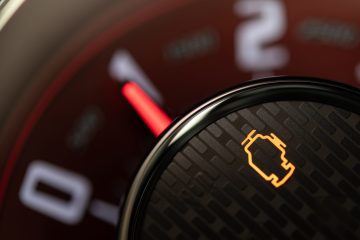The Institute of the Motor Industry (IMI) is warning that a lack of skills to work on Advanced Driver Assistance Systems (ADAS) is putting drivers in the UK at risk.
A new report, Meeting the Demand for Skilled Vehicle Technicians in the Age of ADAS, marks the first time the scale of Level 2 autonomy in the UK car parc, together with the skills required to maintain it, has been analysed. The study found that 5% of the UK’s vehicles feature such autonomy, which means the car can control acceleration, braking and steering through built-in sensor-based systems.
However, there are only 3,000 technicians in the UK with IMI TechSafe qualifications to work on vehicles featuring ADAS. Therefore, in 2023 alone, the IMI estimates a shortfall of 6,000 technicians to support the UK car parc.
As time goes on, things get worse, with the report suggesting that by 2030, 44% of cars on UK roads will include ADAS, requiring a total of 106,000 qualified technicians. Based on current qualification and training trends, the IMI estimates that there will be a shortfall of 51,000 qualified technicians in just seven years.
Systems are also likely to become more complex, with more ADAS requirements implemented to improve vehicle safety, meaning training in the technology is more important than ever.

“Drivers are becoming accustomed to and reliant upon autonomous features on their vehicles,” commented Steve Nash, CEO of the Institute of the Motor Industry. “Any failure could be catastrophic. For example, if a driver took a second too long to notice that their adaptive cruise control had failed on a motorway they could easily suffer a serious high-speed collision with the vehicle in front.
“It would be a similar story if Lane Keeping Assist or the Lane Departure Warning failed and a driver drifted into the neighbouring lane in front of a faster vehicle. The risks could be even higher for more advanced features such as Autosteer and Automated Lane Change.
“It is no exaggeration to say that it is a matter of life and death that these technologically advanced vehicles are maintained only by fully qualified technicians,” Nash continued. “The skills need is immediate with such a significant proportion of UK cars already using Level 2 autonomy. It is also critical to recognise the serious economic impact of the skills gap. A lack of qualified workforce means delays in vehicle repairs, undermining UK mobility.”
Service sector lags behind in ADAS training
While the IMI’s report highlights a big skills gap across the whole automotive aftermarket, there are several subsectors that are more advanced. The accident repair, body and glazing sectors have a greater proportion of their workforce qualified to work with ADAS because of the critical role they play in repairing vehicles after accidents. But there is still a gap in qualified technicians to service the current car parc.

This sector, which comprises a large number of independent repair shops, as well as dealership networks and large, multi-site repair organisations have invested in the latest tools and technologies as well as training for their workforce in order to remain competitive. The IMI estimates that there are currently 1,800 technicians ADAS qualified in these subsectors with a requirement for 25,000 technicians ADAS qualified by 2030.
“Autonomous vehicles rely on complex systems, including advanced electronics, sensors and software”, continued Nash. “Without the necessary skills to diagnose and fix issues with autonomous systems, the safety and reliability of the vehicles cannot be guaranteed.
“Not only that, the increasing integration of autonomous technology in vehicles means that technicians need to have a deep understanding of how different systems interact and work together, requiring a commitment to continuing professional development to keep up with the latest advancements in the field.”




You must be logged in to post a comment.